The North Yorkshire Coast – 9 perfect seaside places to visit
The North Yorkshire Coast is a famous stretch of coast along the east coast of England. The North York Moors National Park runs 26 miles up the fabulous Yorkshire coastline and it includes historic Yorkshire villages such as Robin Hood’s Bay, Runswick Bay, the city of York and Staithes. The Yorkshire Coastline makes for the perfect holiday or vacation when visiting England or if you are looking for the perfect staycation.
Encompassing some beautiful coastal towns in Yorkshire the North Yorkshire Coast also includes sweeping valleys, rugged coastlines, the Cleveland Way, superb beaches the North York Moors and of course the Yorkshire Dales.
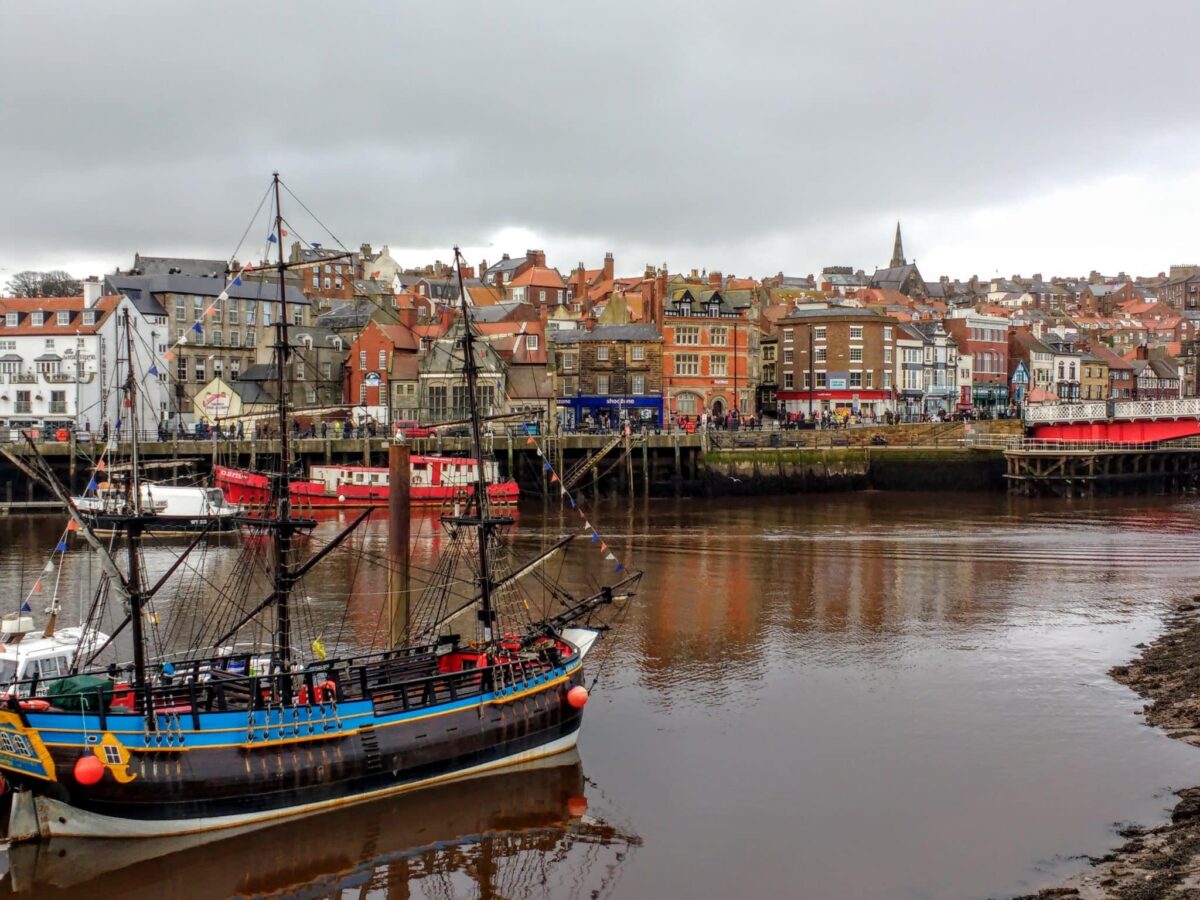
The North Yorkshire Coast and the Cleveland heritage coast have something to offer all tastes; whether you want peace and solitude, fabulous market towns and foodie destinations walk along the miles of golden sandy beaches, have invigorating adventures or merely the chance to relax and explore the many charming Yorkshire Coast Towns.
The Yorkshire Coast includes some amazing towns and cities along the way from Scarborough to the famous Whitby where it is said Bram Stoker was inspired to write Dracula.
The Yorkshire coast is home to three of thirty-two nationally designated Heritage Coasts in England and Wales. The Heritage Coasts are so designated for their exceptional scenic quality.
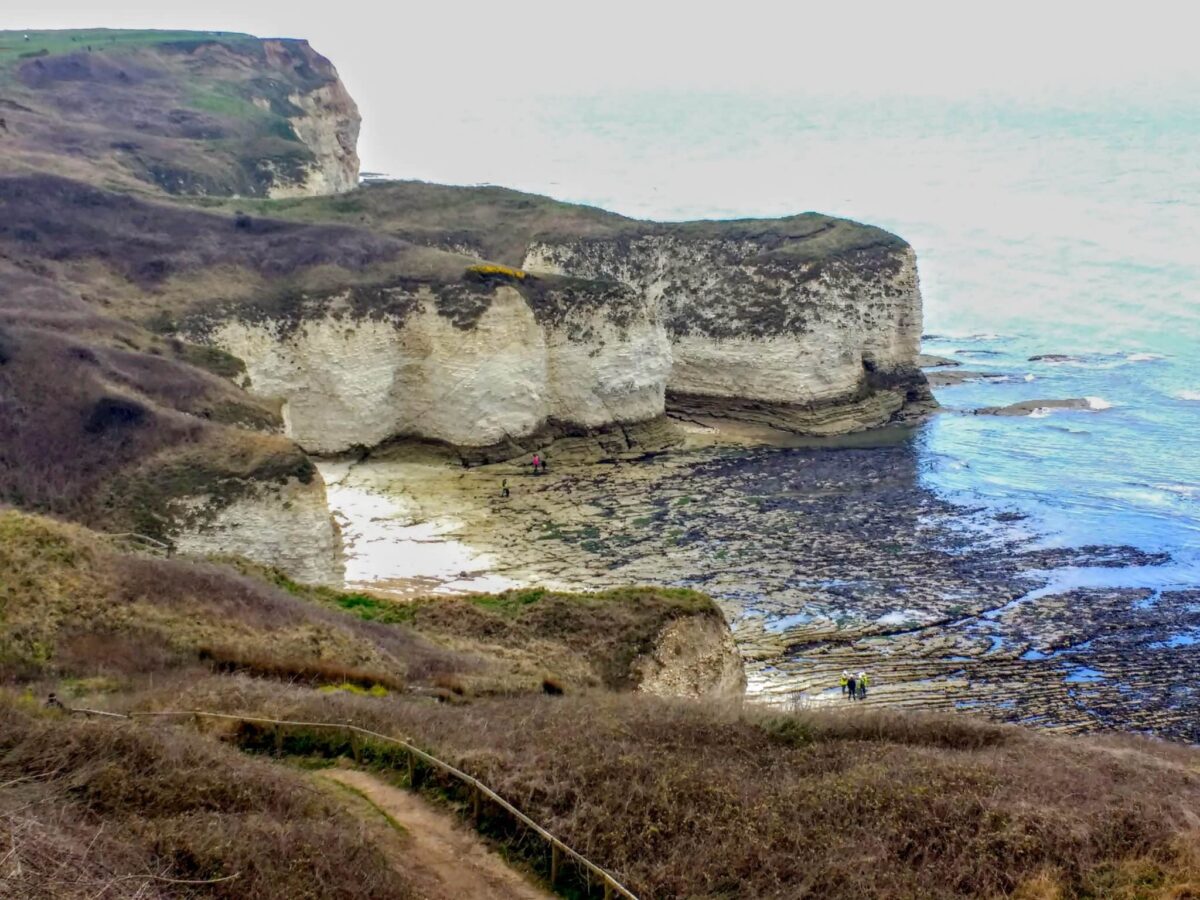
The Heritage Coasts are designated by Natural England to protect the coastline, its environment and its heritage. Part of the designation is the provision of a coastal footpath along the length of the Heritage Coast. The northernmost Heritage Coast has a footpath alongside its entire length.
One of my favourite ways to travel Yorkshire is to take the North Yorkshire Moors Railway it doesn’t run along the coast but it is a fabulous way to see some incredible landscapes and smaller Yorkshire villages and beauty spots.
Yorkshire beaches map
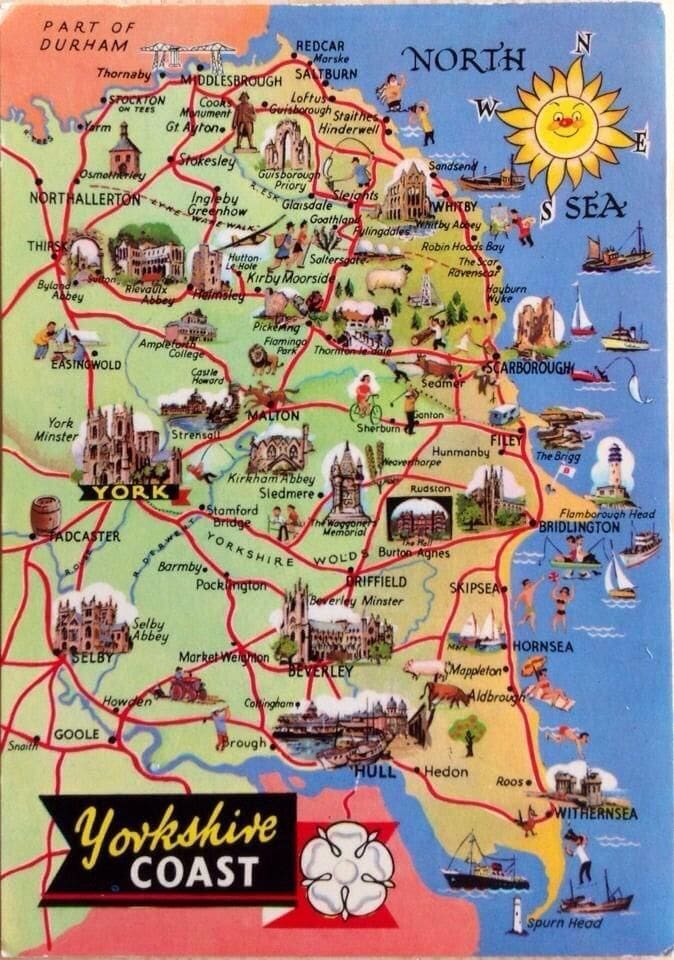
Xyuandbeyond is reader-supported. When you buy through links on our site, we may earn an affiliate commission. You can read my privacy policy here.
Xyuandbeyond is reader-supported. When you buy through links on our site, we may earn an affiliate commission. You can read my privacy policy here.
Best Yorkshire seaside towns
Scarborough
The stories have it that Scarborough was founded around 966Ad by a Viking raider. There is sadly no architectural evidence to support this. In the 4th century, there was a Roman signal station on the headland and there are lots of archaeological finds that indicate there were stone age and bronze age settlements. Scarborough is one of the largest and most popular cities for a beach holiday on the Yorkshire Coast.
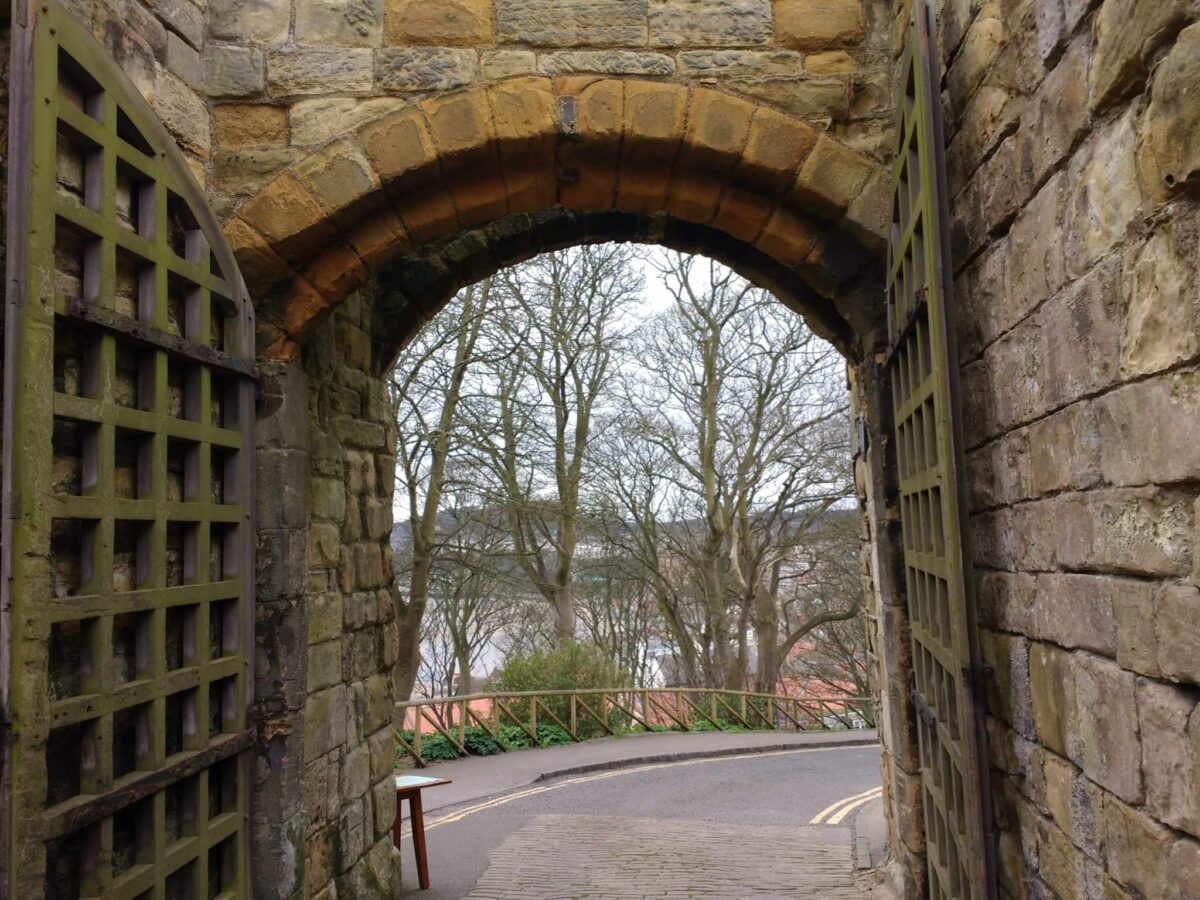
Scarborough is the largest resort on the Yorkshire coast and it sits on a high rocky point that faces east into the North Sea. On top of the point are the ruins of Scarborough Castle and the point divides the seafront into its two bays.

South Bay
South Bay in Scarborough was the original settlement of the area and today forms the old town. This is the main tourist area with lovely beaches tons of penny arcades and children’s amusement.
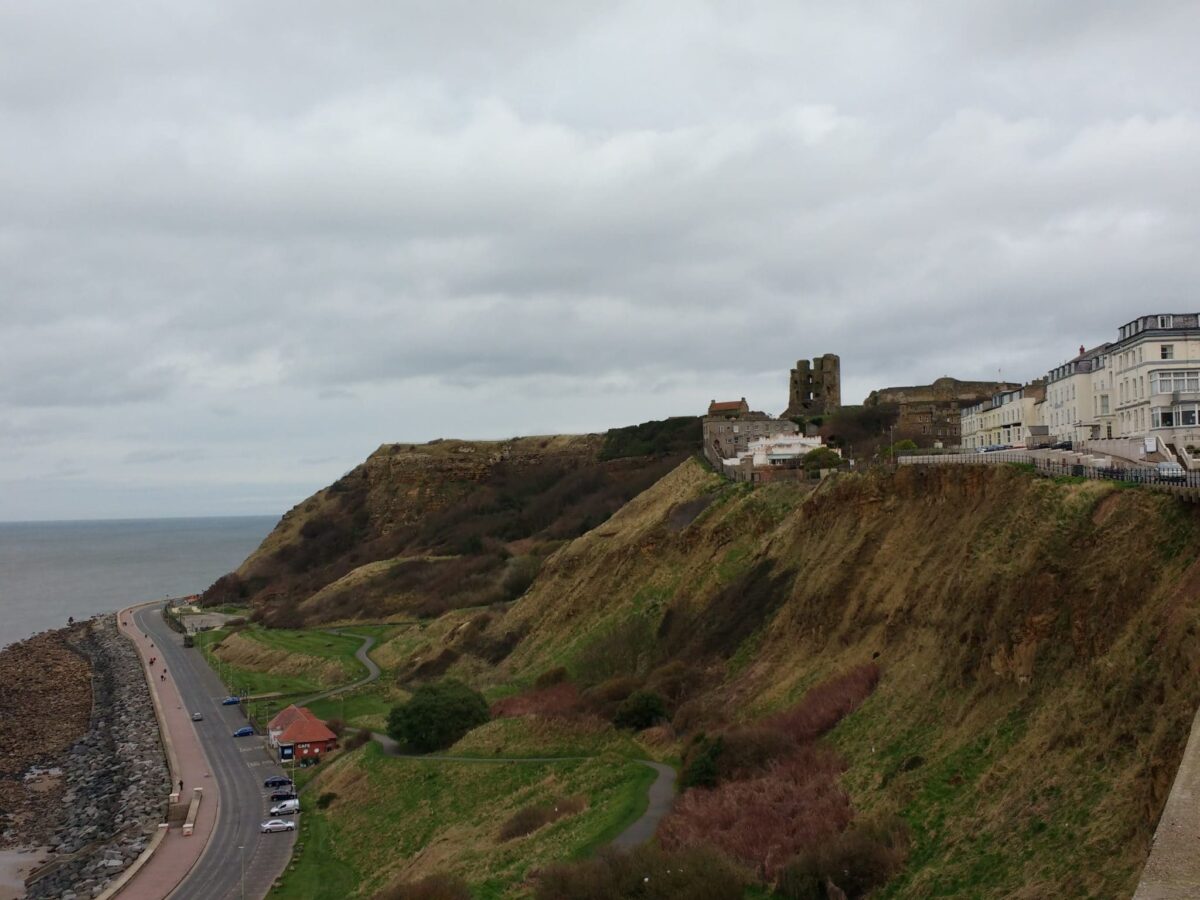
There are plenty of cafes and restaurants to have a meal of some great fish and chips and lots to entertain families. Unlike Blackpool, the promenade has undergone major improvements and is very pedestrian-friendly.
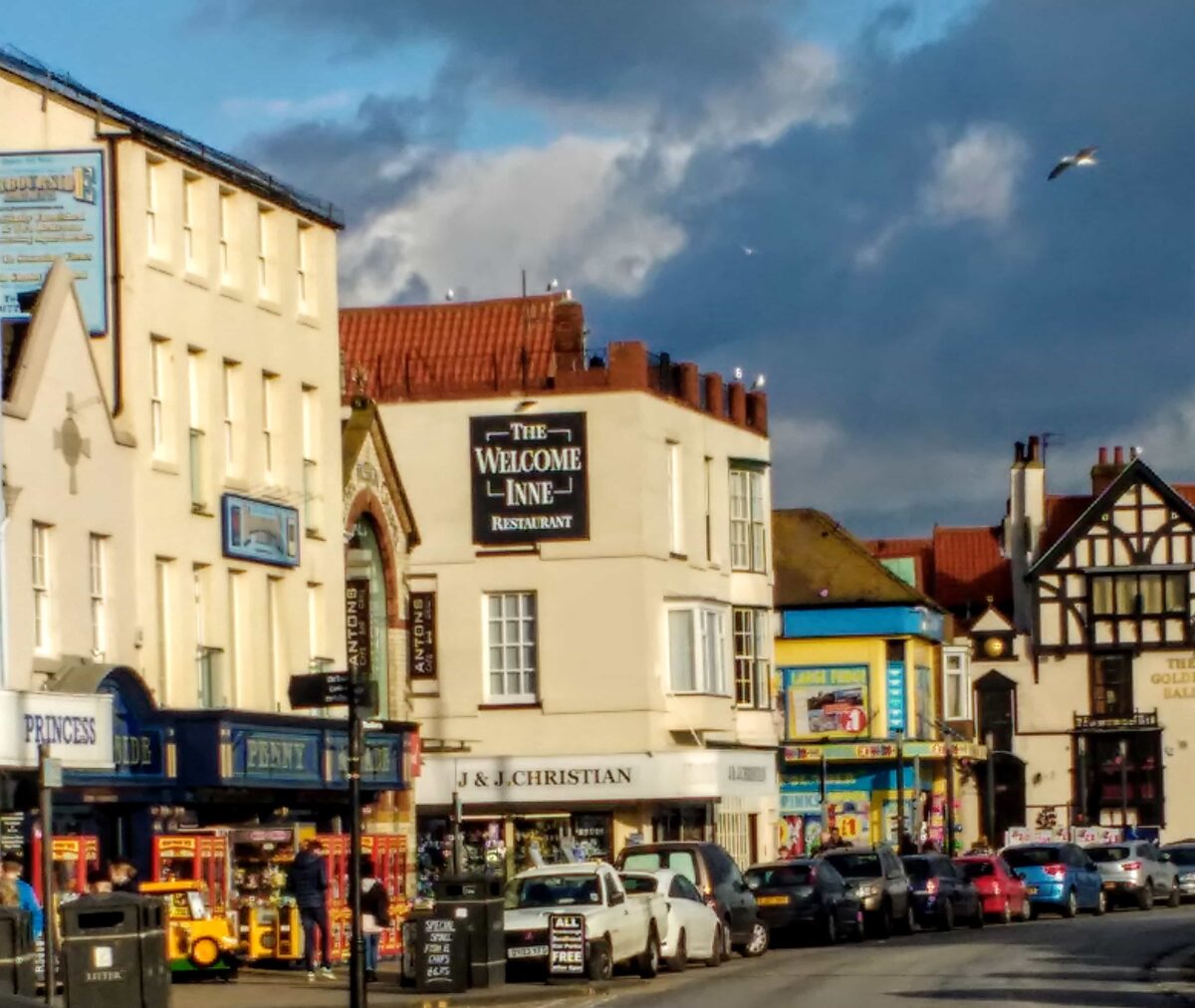
The North Bay
North Bay is a more peaceful area of Scarborough. This is where you will find Peasholm Park which strangely enough is a Japanese theme park. The park includes a boating lake and putting green a fabulous bandstand where open-air concerts take place and beautiful gardens and trails to walk.
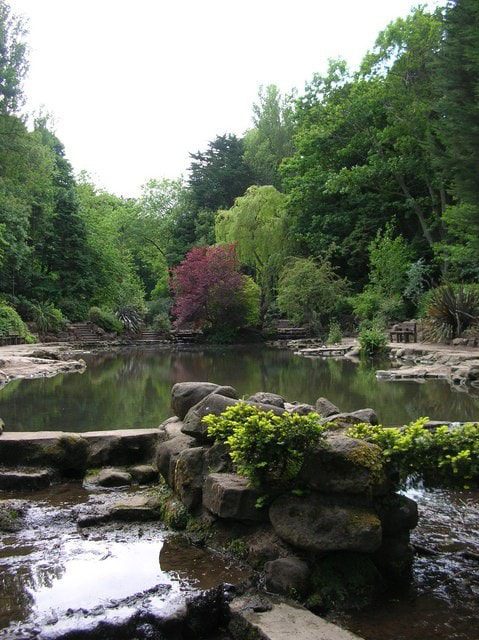
Scarborough Castle
Scarborough Castle is a major tourist attraction under the care of English Heritage on this section of the Yorkshire Coast. The remains consist of a late twelfth-century castle with thirteenth and fourteenth-century modifications. Also visible are the foundations of a Roman watchtower.
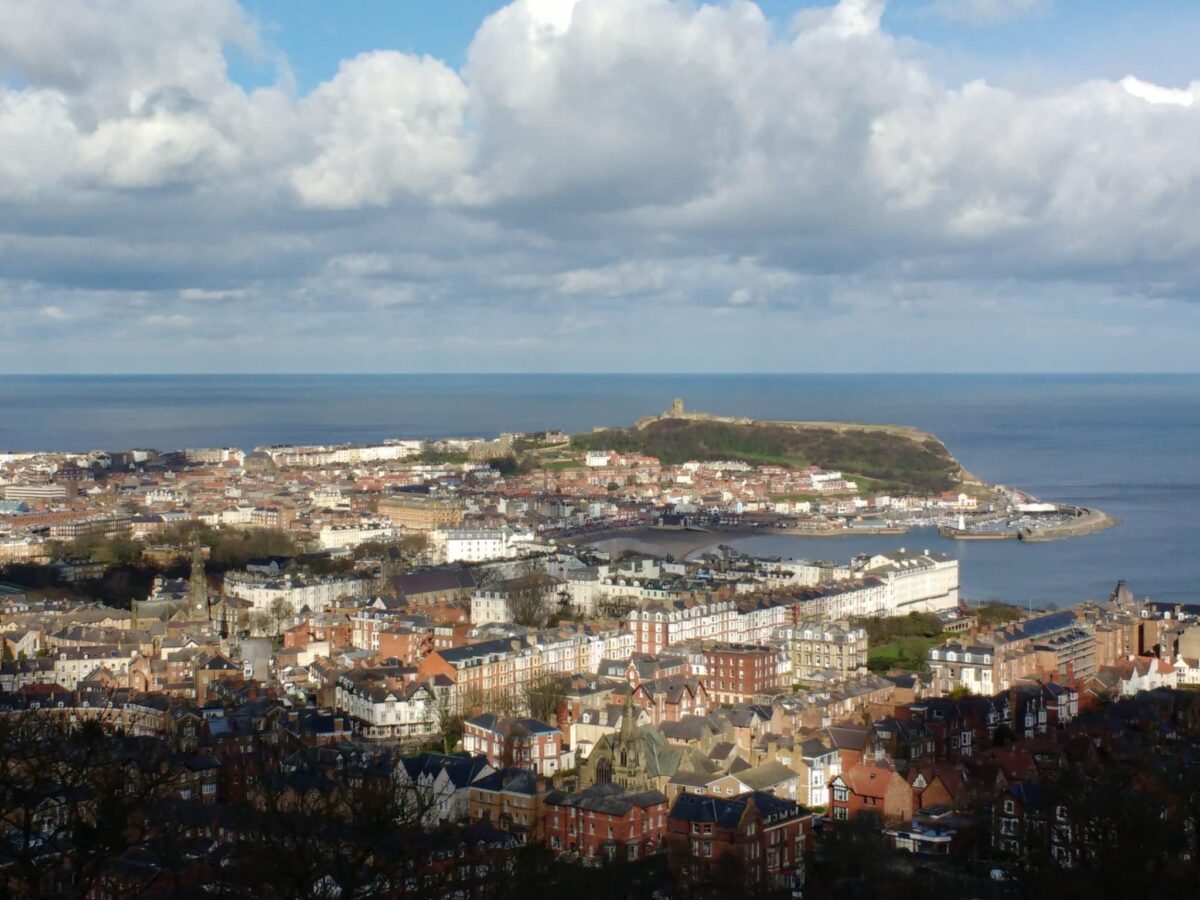
The cost to visit the castle is £6.90. There is a little coffee shop on the grounds and there are panels that guide you through the history of the site.
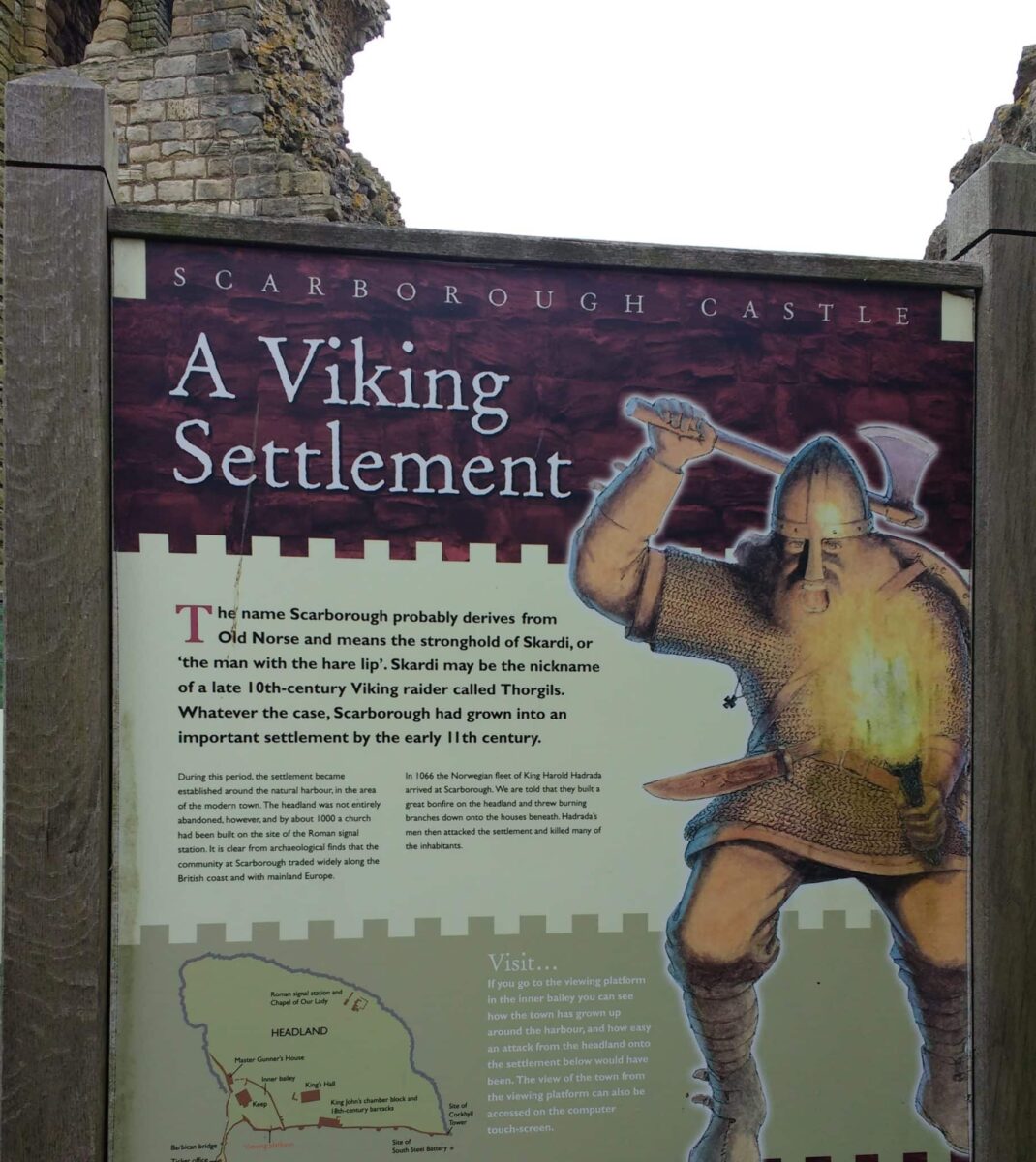
There is no parking on-site, but there is a Park and Ride or the pay-and-display Marine Drive car park. Parking is only available for disabled visitors, which must be pre-booked.

Anne Bronte’s Grave
While you are up at the castle take a moment to visit Anne Bronte’s gravesite and the beautiful little St. Mary’s church with an amazing view of the harbour area and Yorkshire Coast.
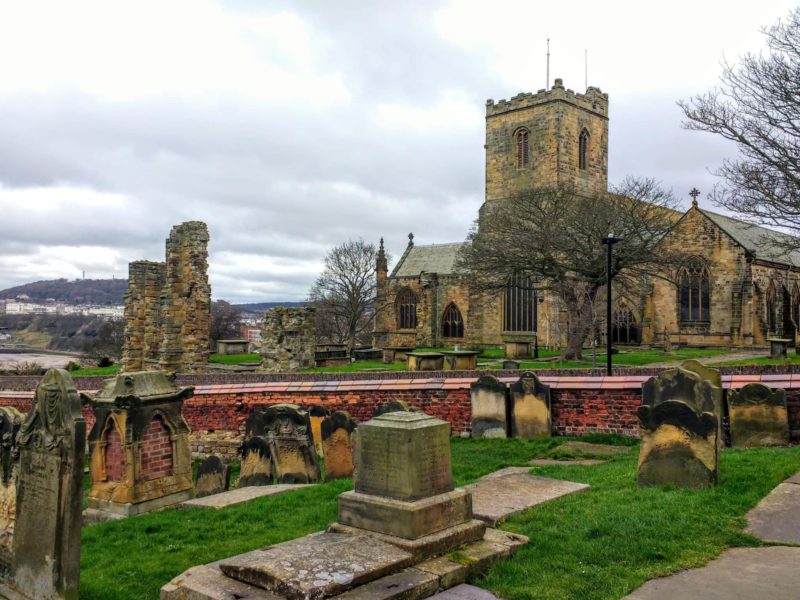
Anne Bronte died in Scarborough on 28th May 1849 aged 29 yrs. She is buried in St Mary’s Church graveyard in Scarborough. Anne loved Scarborough and used it as a setting for her novels – Agnes Grey and The Tenant of Wildfell Hall, she often remarked that she wanted to open a school in Scarborough.

Filey
Another traditional favourite, Filey is an ideal place to unwind and have some seaside fun. With five miles of unspoilt sandy beach, it is a family-friendly destination and doesn’t get too crowded, even in the height of summer. Slightly off the beaten track, it is a lovely spot for a great day out at the coast without the volume of tourists who visit the main resorts.

A fishing village turned tourist resort, Filey is sitting on a cinematic five-mile sandy bay which is framed by the headlands of Flamborough Head and Filey Brigg. There is an old-fashioned promenade and some lovely beach chalets that can be rented by the day. There are also pony rides and a cafe/restaurant on the beach.

For the kids look for Cobble Landing where the fishing boats are towed onto the beach with a tractor. There are also great rock pools at Filey Brigg for those budding oceanologists. At the edge of the beach, you will spot The Crescent a gorgeous row of Victorian townhouses with formal gardens out front.
Saltburn by the Sea
Saltburn is a seaside resort north of Whitby back in its Victorian heyday and was once an important Victorian bathing resort. The old Pier used to be 1500 feet in length but is now about half that is the pier; once 1,500ft in length, but following many years of neglect and a few disasters, the pier stands at less than half this length. This was the first iron pier built on the North East Coast and it is the most northerly surviving pier on British soil.
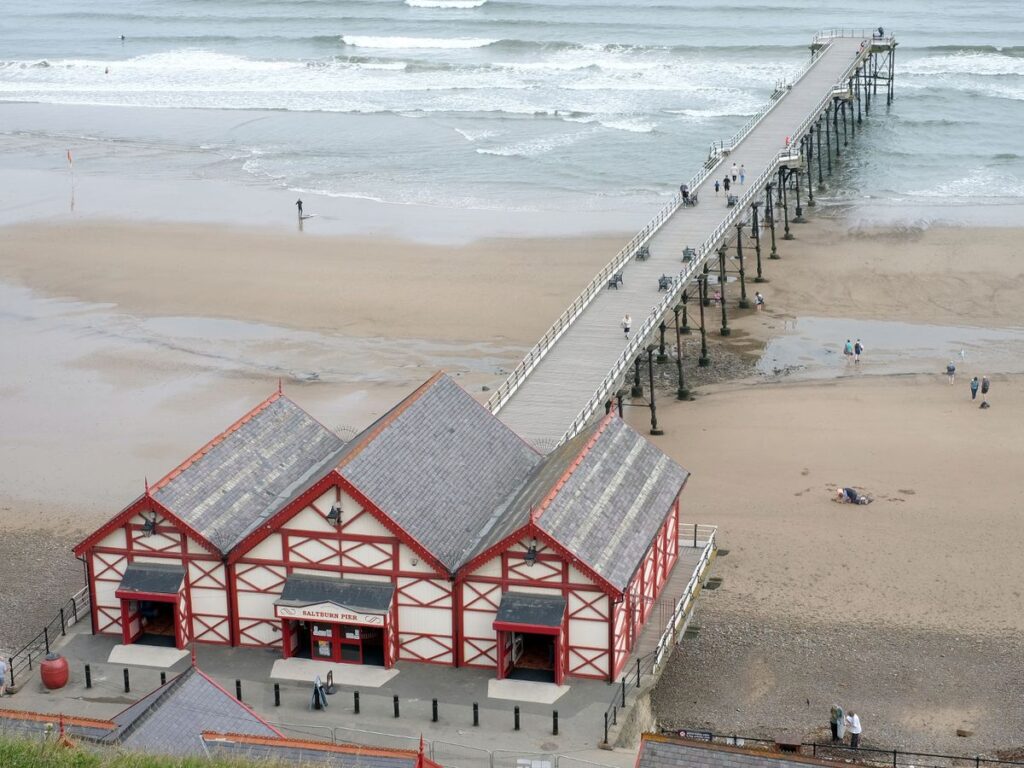
Saltburn Cliff Tramway
Standing on the pier facing land you can’t miss Saltburn’s cliff tramway and it is England’s oldest water-balanced funicular. This was constructed to provide an easy route up and down the 120ft cliff for the delicate Victorian ladies allowing them to be carried gently down the cliff to their bathing machines.
Other Victorian highlights include the formal Italian Gardens which are served by a miniature railway. One of the highlights of a visit to Saltburn is the Saltburn Food Festival held during the summer months. It features over 100 stalls from independent food producers. There are shows and demonstrations and it is a perfect place to graze the food samples.
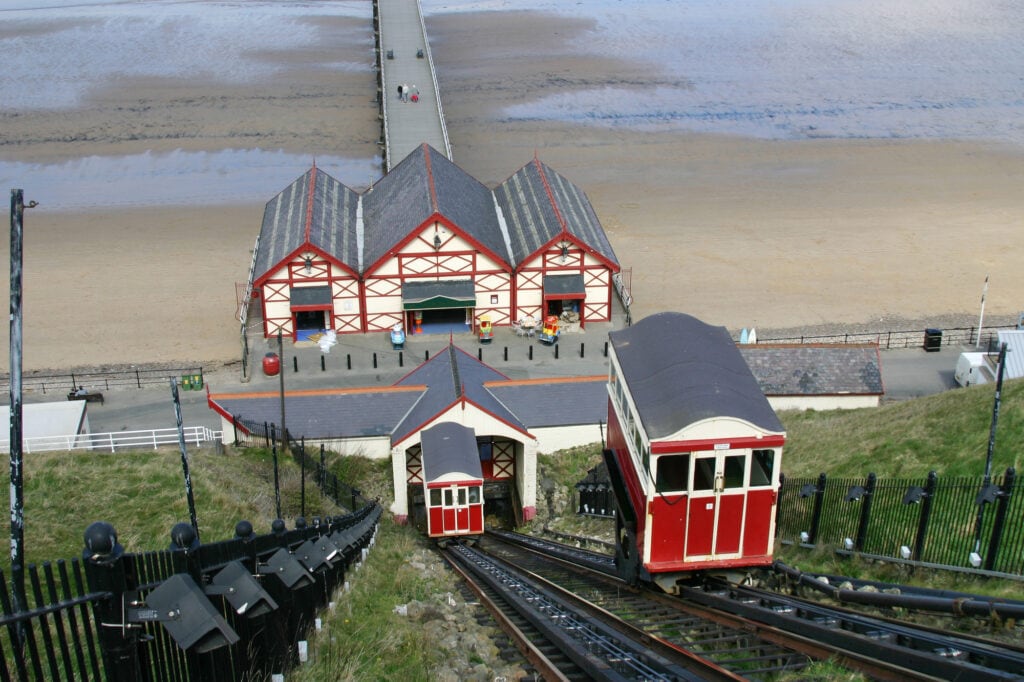
Saltburn is home to one of the best surf spots along this stretch of the North Sea coast. Facing directly north it picks up more swell than neighbouring spots and is a high spot for surfing tourism.
Whitby
Home to the famous haunted Whitby Abbey, Whitby itself is a seaside town well-loved by locals and visitors alike.
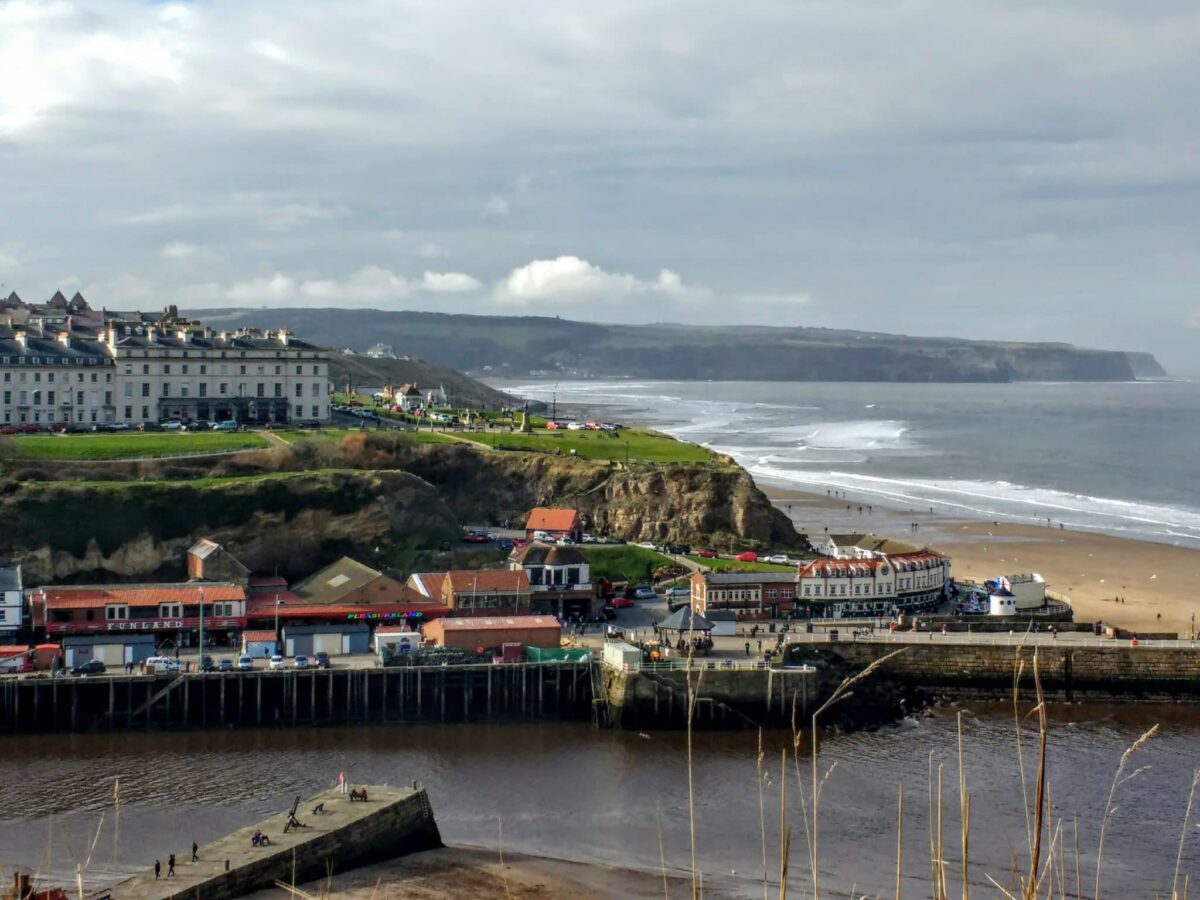
Home to the earliest English poet Cædmon learned to compose after a dream he had. Caedmon was a zealous monk and over time became a great inspirational Christian poet.
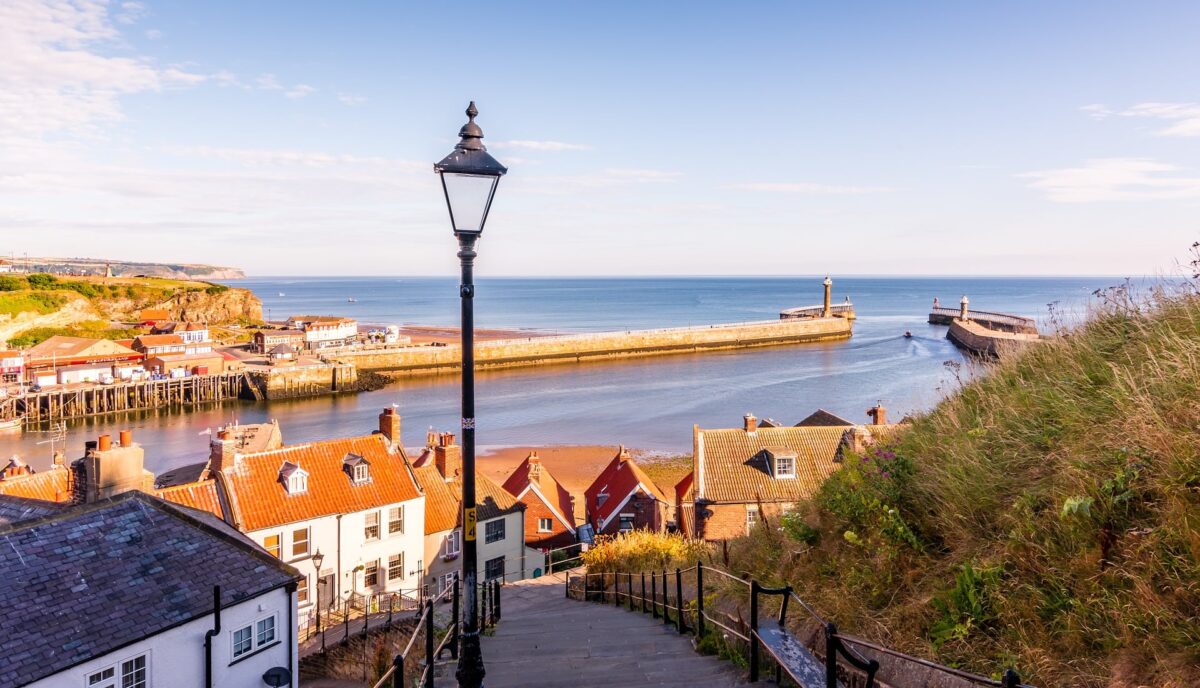
Whitby became a settlement in 665 when the Christian king of Northumbria, Oswy founded the abbey under the abbess Hilda. The name Whitby comes from the Old Norse which means “white settlement”. Whitby was a key port and centre for the whaling industry and from this grew a great shipbuilding centre.
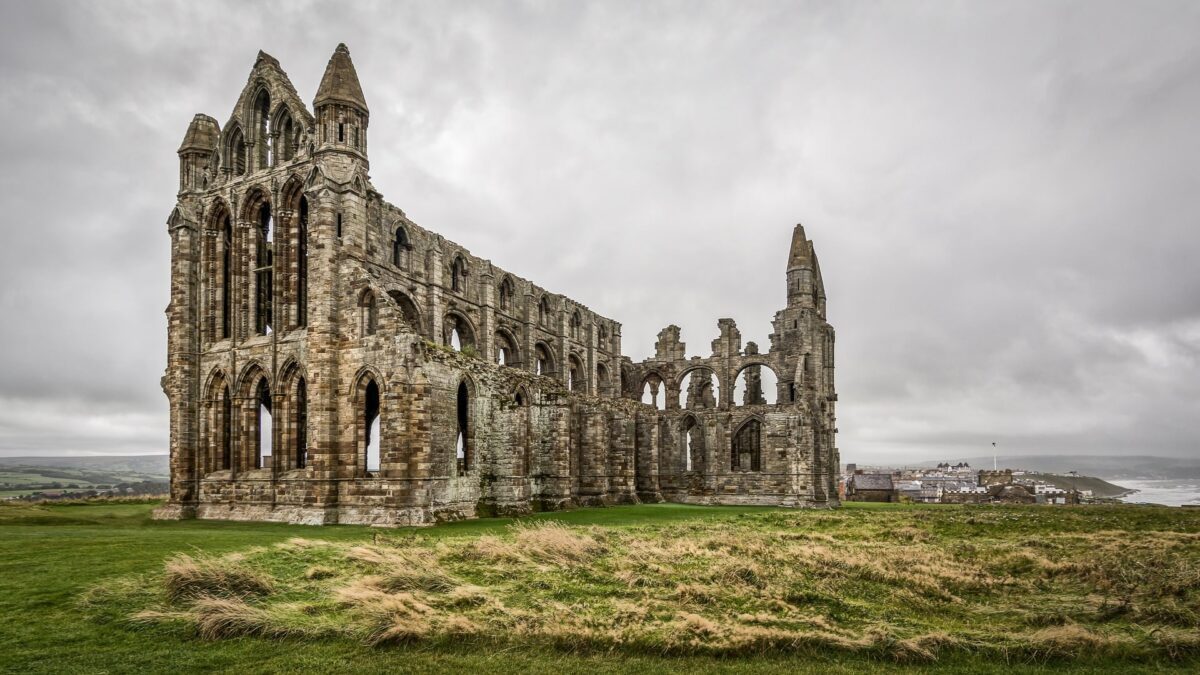
Whitby Jet
Due to the areas, great mining Whitby also became renowned for the manufacture of Whitby Jet which was used by Queen Victoria as mourning jewellery. The black mineral jet was found in the cliffs and on the moors and has been used since the Bronze Age to make beads. It was mined by the Romans and in Victorian times it was brought into the town to be made into decorative items.
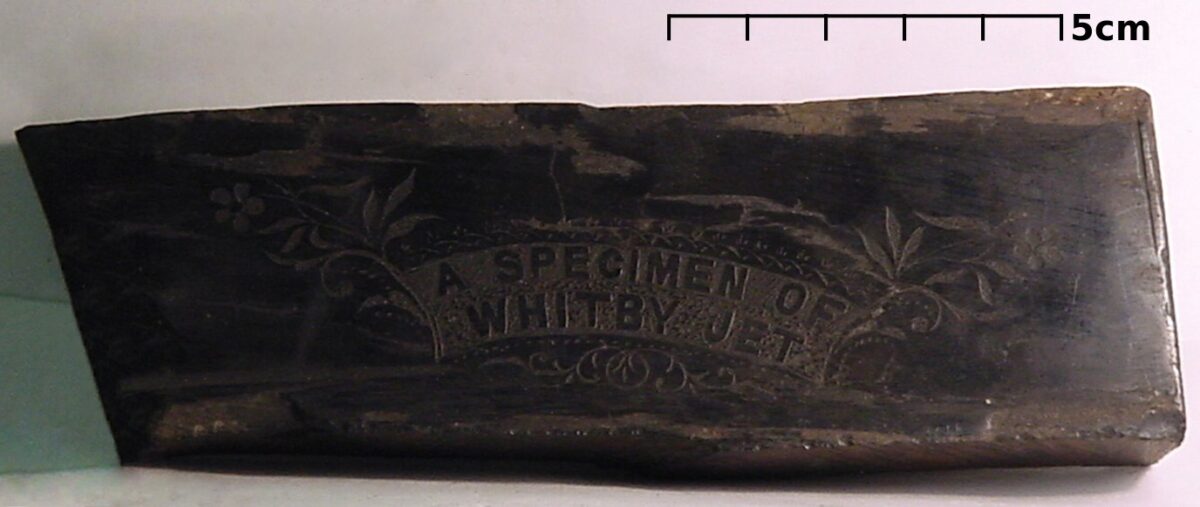
Whitby Abbey
The monastery was destroyed between 867 and 870 in a series of raids by Vikings from Denmark under their leaders Ingwar and Ubba. You may recall from the HBO series Vikings one known as Ube which could have been the Ubba that destroyed the monastery.

Whitby Abbey haunted Bram Stoker and it became the inspiration for his legendary Dracula book. There are 199 steps down to Whitby itself from the Abbey and you can either take the steps or drive up to the Abbey. This is the famous Abbey of course founded by St. Hilda. The Abbey contains 2000 years’ worth of history and is a fascinating, haunted place.
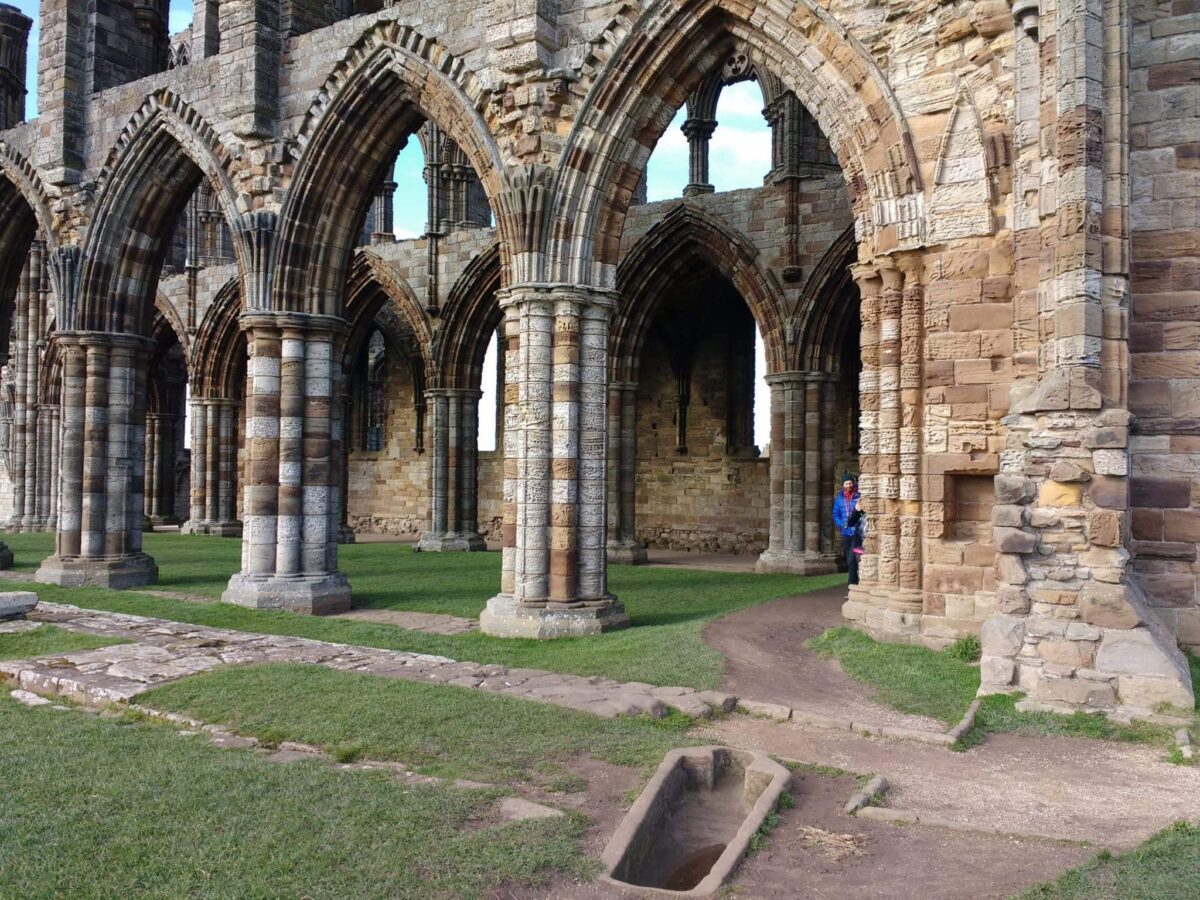
Whitby Abbey has been a king’s burial place, the setting for a historic meeting between Celtic and Roman clerics, and the home of saints.

There is a visitors centre at Whitby Abbey and a small cafe where you can have a grand cup of tea after the winds of the place howl through you.
Sandsend
This pretty fishing village enjoys excellent views of Whitby Abbey, and a fine stretch of beach divided by a stream running into the sea. It is popular with families, surfers and fossil hunters! The village offers award-winning restaurants, cafes, two pubs plus a well-stocked village shop.
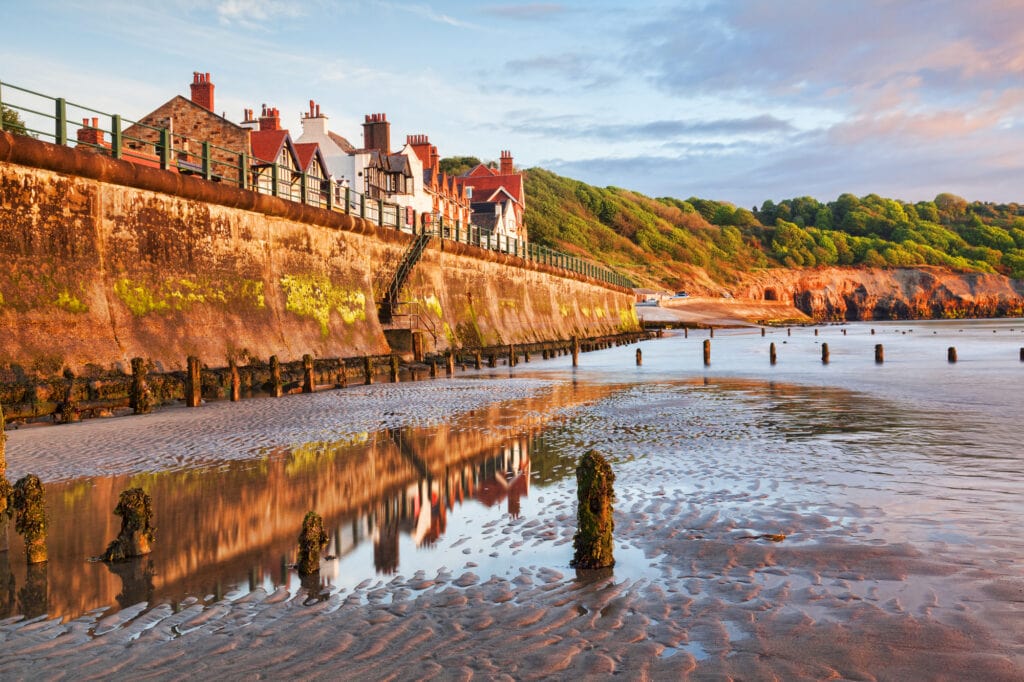
Runswick Bay
Just a few miles north of Whitby, Runswick Bay was once a fishing village and boasts a beautiful and sheltered sandy beach. Voted Beach of the year in 2020 it is a very popular village for beach holidays.
The original fishing village was almost destroyed by a landslide in 1682. Luckily there were no fatalities as the villagers were alerted by two funeral attendees. The village was then rebuilt slightly further to the south.
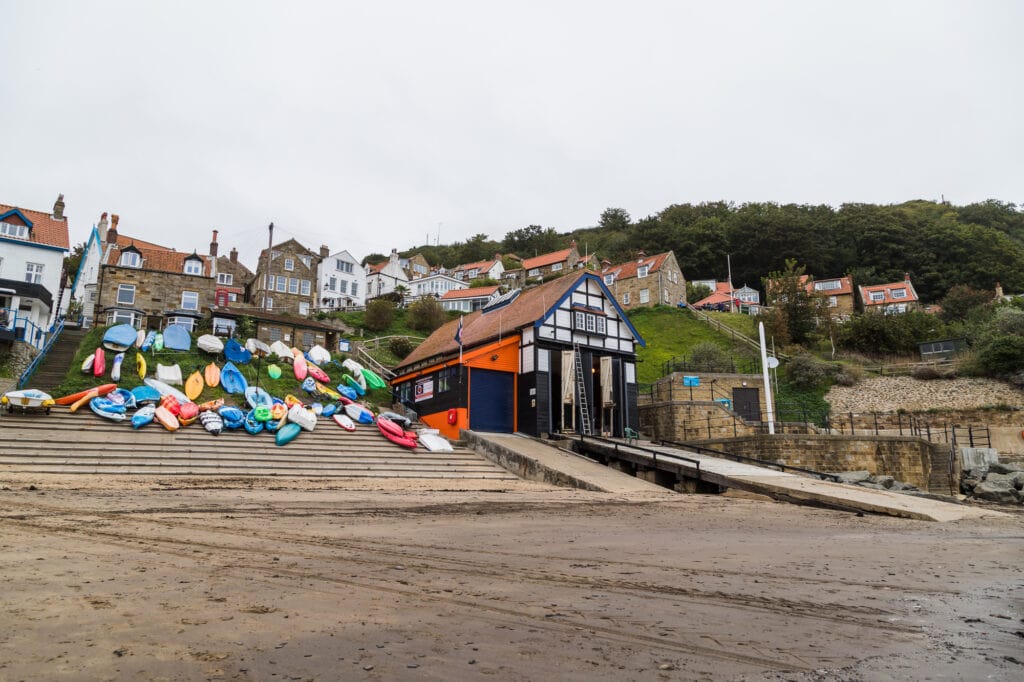
It is a very pretty spot with scenic paths heading both North and South on the Cleveland Way, including spectacular views over Kettleness. It’s a popular destination with families, as children can enjoy rock pooling, building sandcastles, coastal walks and fossil hunting. Don’t forget your bucket and spade!
Robin Hood’s Bay
Robin Hood’s Bay is what you picture when you think of British seaside villages. There’s a lovely beach where you can play in rock pools, dig for crabs and have a great ice cream while wandering the village.

Robin Hood’s Bay is a walk down the hill from the top. Parking is in several lots as cars are not allowed in the village. It’s a great walk down but a bit of a hike up. There is a wide range of pubs, restaurants and cafes to grab a cup of tea and a great crab salad sandwich.
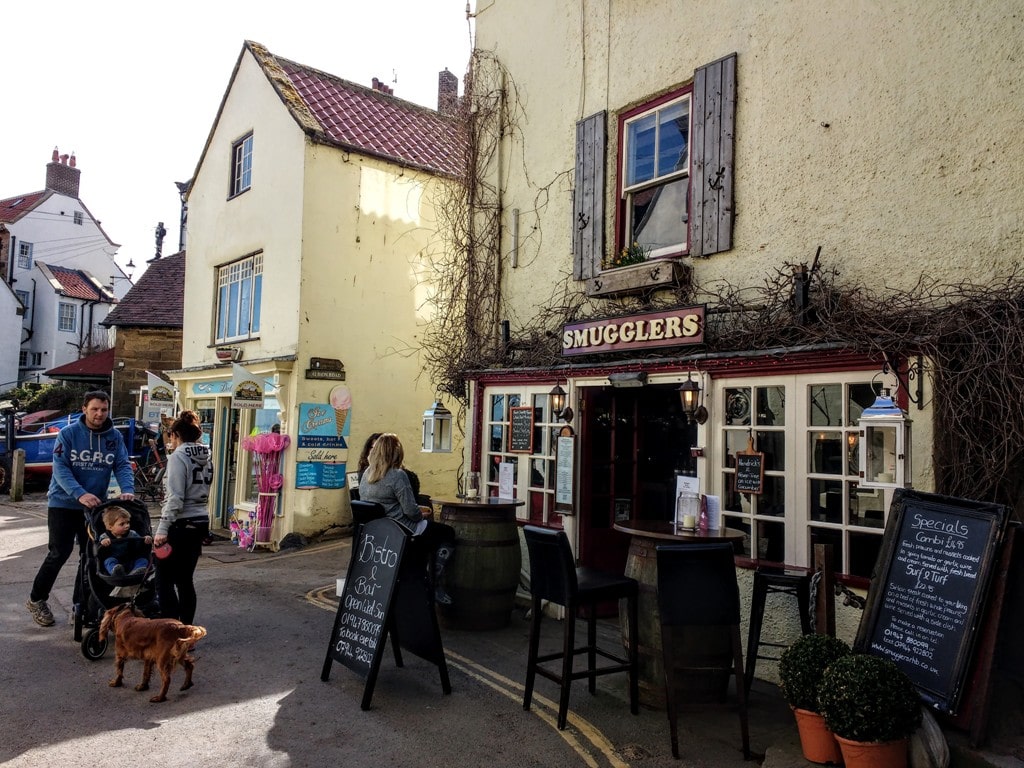
Boggle Hole
Found along the ‘Cleveland Way’, which was a notorious smugglers’ haunt. Boggle Hole is a unique curved-out hallow that has been worn away by the sea and its name has derived from boggle – or goblin – which legend says are to haunt the slopes of the cave.
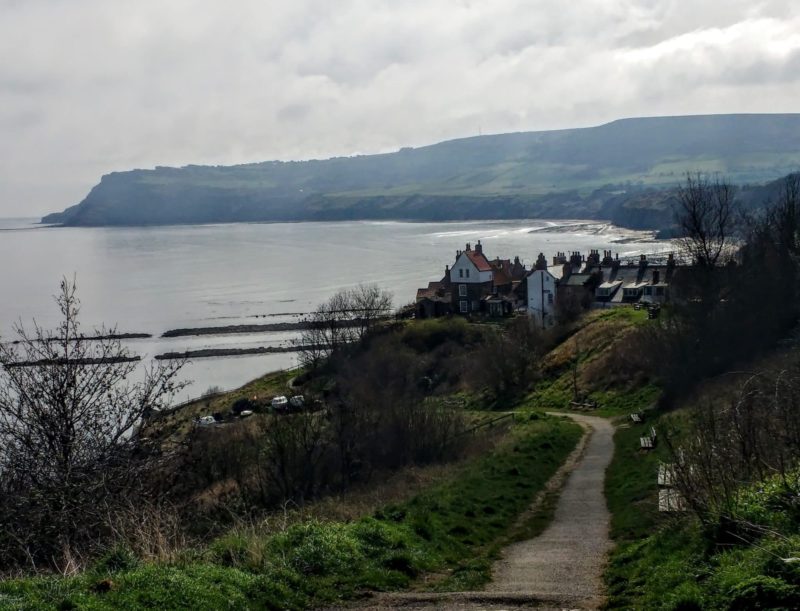
The Old Coastguard Station
Sitting on the edge of the sea in Robin Hood’s Bay is this National Trust-owned property, The Old Coastguard Station. Here, you will find a collection of models and colourful displays, allowing you to learn about life by the sea including wildlife and geology.
At the station, you can discover more about the North Yorkshire Coast so special, from its distinctive geology and the impact of the elements on local wildlife and the secret history of smuggling.
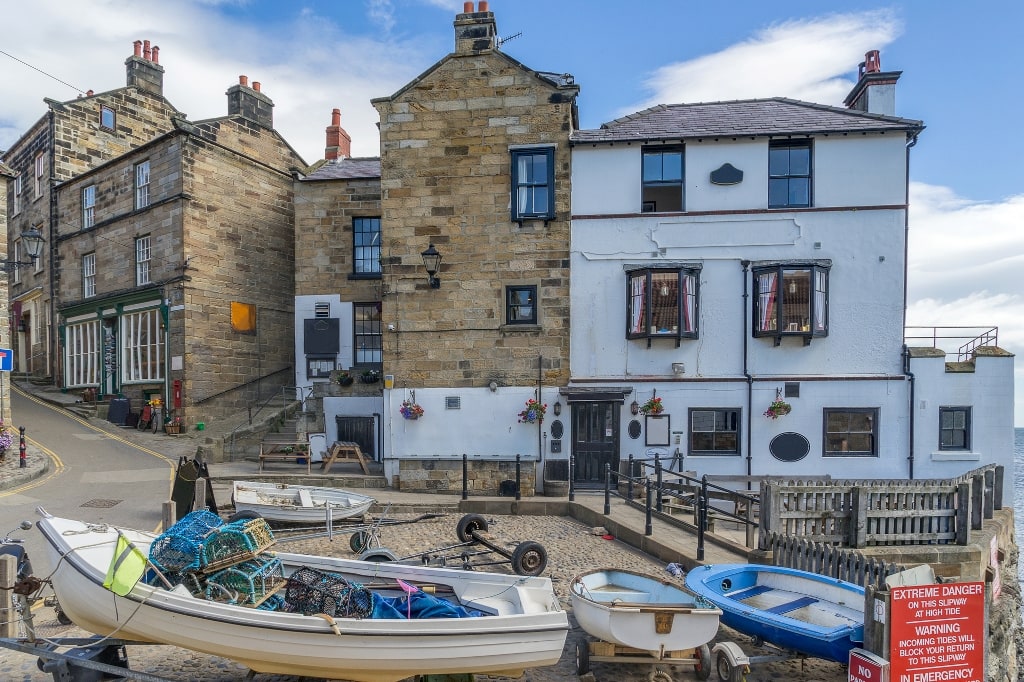
Visitors can have fun making waves, generating wind power and finding out more about the natural processes happening every day at Robin Hood’s Bay. Come face to face with fascinating creatures in a rockpool tank, spot shore crabs, hermit crabs, blennies, winkles, sea anemones and prawns – all discovered in the rock pools just outside the centre.
Robin Hood’s Bay Museum
Whilst visiting Robin Hood’s Bay be sure to spend a moment within this museum, boasting a collection of artefacts and displays of local interest. This free-of-charge attraction includes information on the local shipwrecks and rescues, as well as charming photographs of the Bay.
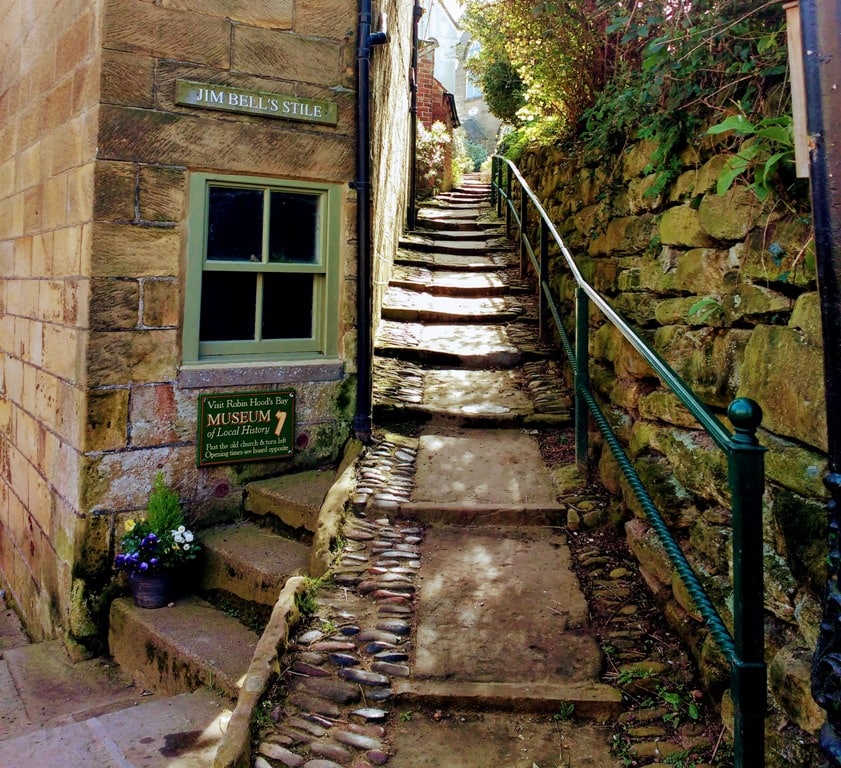
Lots of places to stay with BnB’s aplenty in the old fishing village. The streets and walkways are narrow and twisty with lots of cobblestones and there is much history here. You can take a Ghost Walk through the village, visit the Old Coastguard station or simply relax on the beach.
The National Trust’s visitor centre displays exhibits of shipping, local history and of the smuggling trade that was a highlight of Robin Hood’s heydays.
Phantom Thread is a film with Daniel Day-Lewis (his final one) that was filmed at the Robin Hood’s Bay hotel at the top of the Village.
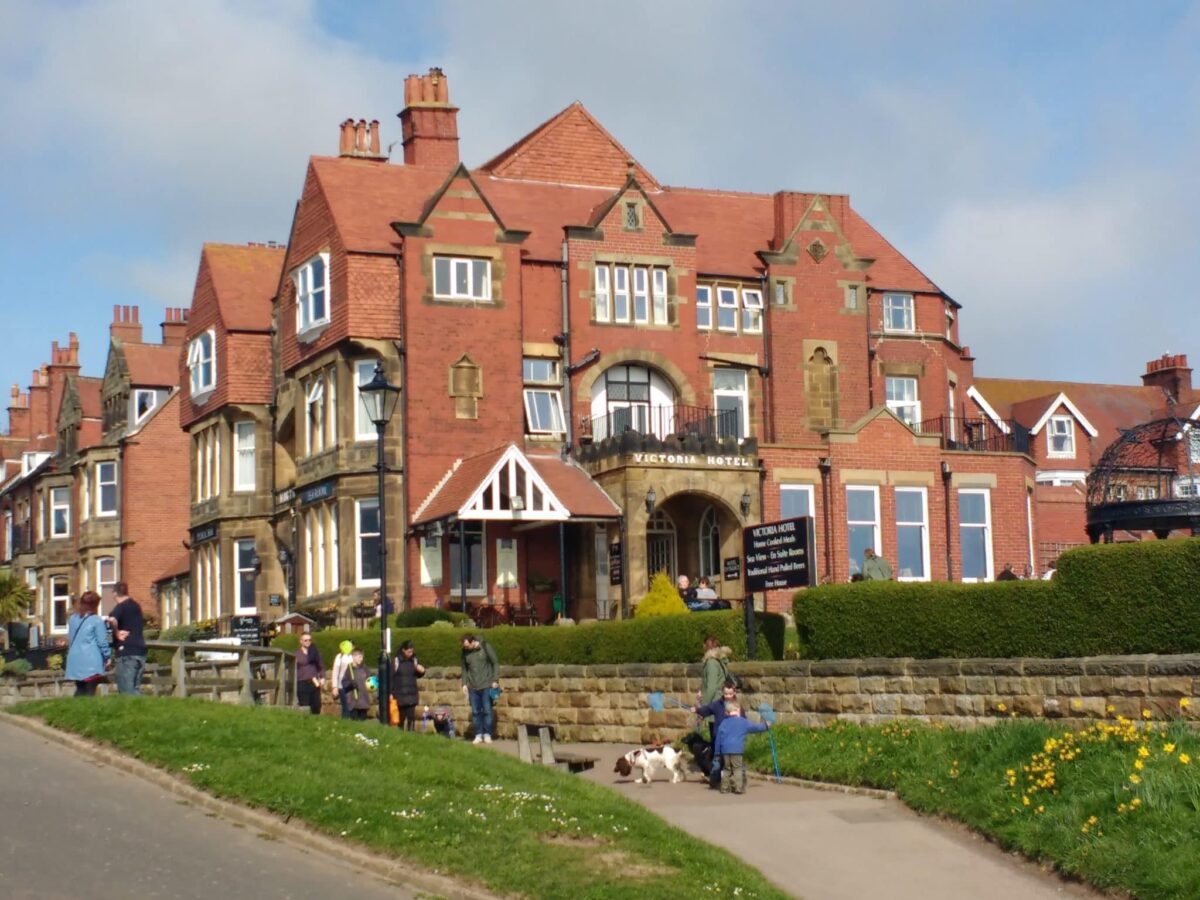
Dracula by Bram Stoker has several scenes set in Robin Hood’s Bay. Abraham visited the area recreating the steep steps and the sightings of the red eyes, the ship that ran aground with the immense dog.
Bridlington
Glorious clean beaches, history galore, sporting fun, independent shops, great entertainment and amazing nature, in Bridlington there is something for everyone, whatever the weather.

Bridlington Harbour and Old Town
Bridlington’s pre-roman harbour and characterful Old Town are must-sees for any history buff, being home to the beautiful Augustinian Priory, Bayle Museum and Harbour Heritage Museum.

Bridlington Surfing
It also turns out that it was in Bridlington that surfing was first introduced to Britain. In the 1800s Hawaiian royalty was visiting the UK and they took a trip to the beaches of Bridlington where they pulled out their surfboard and enjoyed the waves of the chilly North Sea. A letter was found in Hawaii from the young Prince and his brother who were both studying in England at the time.
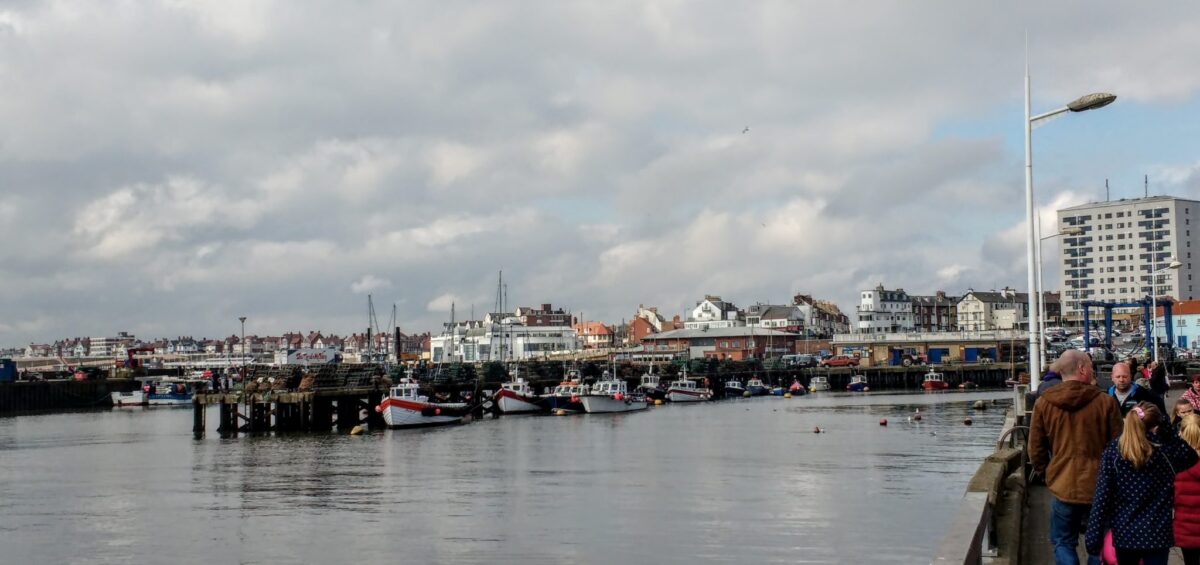
The prince wrote that he and his brother Prince David Kahalepouli Kawananakoa Piikoi were allowed by their tutor, believed to be John Wrightson, to have a holiday in Bridlington as a reward for good work in their studies in schools and colleges around Britain – they’d been in England furthering their education for almost a year.
Bridlington seafood

Bempton Cliffs
For nature lovers, going on a seashore safari, a boat trip around the bay or bird watching at Bempton Cliffs are all experiences not to be missed.

The Bayle Gate & Church of St. Mary
The Church of St Mary was built on the site of an Augustinian Priory. The Church was once a fortified building and the Bayle Gate which is nearby is the only thing that remains of that fortification.

Bridlington Spa
Bridlington Spa was originally opened in 1896 and quickly became a leading resort for the Victorians in England. It was in its heyday Bridlington was a leading entertainment resort. It continued to be an entertainment venue but was getting more and more rundown until the early 2000s when money was finally found to refurbish the place. It is now a beautiful venue for live music, entertainment and corporate workshops.

These days Bridlington has unfortunately been voted a less attractive place to visit than Blackpool which I simply don’t agree with.
Yes, parts of Bridlington were tacky and old-fashioned but it had a beautiful beach like Blackpool and the seafood available was simply to die for. It was nowhere near as bad as Blackpool.
Staithes
Staithes is a gorgeous fishing village with a pretty harbour when the tide is in. It is a great place for fossil hunters as well. Located 10 miles from Whitby, Staithes was once one of the busiest fishing ports on the North East Coast. It was also the home of Captain James Cook.

The Staithes Group is an English painting group that made the village their home in the late 19th century. There were 30 artists in the group and with a nod to them, Staithes hosts an Arts Festival in the autumn.
Captain Cook & Staithes Heritage Centre
One of the places to visit in Staithes is Captain Cook & Staithes Heritage Centre. This is a recreation of the shop where Cook worked and includes over 200 of his books, letters, medals and more.

Yorkshire’s Dinosaur Coast
Staithes sit on what is known as the ‘Dinosaur Coast’, making it a favourite with fossil hunters, palaeontologists and dinosaur fans. You can explore on your own or take an organized tour.
Staithes is a lovely place for a visit Anna has written a lovely article called The Sleepy Coastal Village of Staithes. Take a moment and enjoy this little idyllic village she writes about.
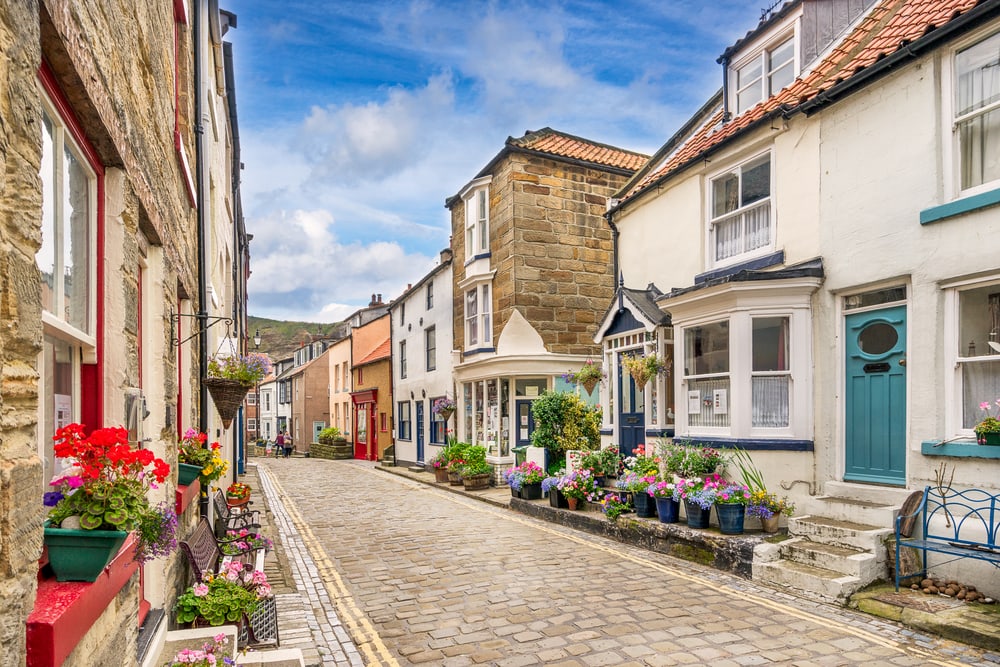
There is much more to see on the Yorkshire Coast and the area holds many great hikes and walks from the Yorkshire Downs. Two of these world-renowned places are The Cleveland Way and Flamborough Head.
The Cleveland Way
The Cleveland Way is a 109-mile walk from Helmsley to Filey. With views of dramatic rugged coastlines to fishing villages like Staithes, this hiking route is pretty spectacular.

Helmsley
Starting from Helmsley the route could take around 9 days to walk the full horseshoe trail. Places to see along the way include Helmsley Castle, Rievaulx Abbey, Mount Grace Priory, Gisborough Priory, Whitby Abbey and Scarborough Castle to name just a few special sites.
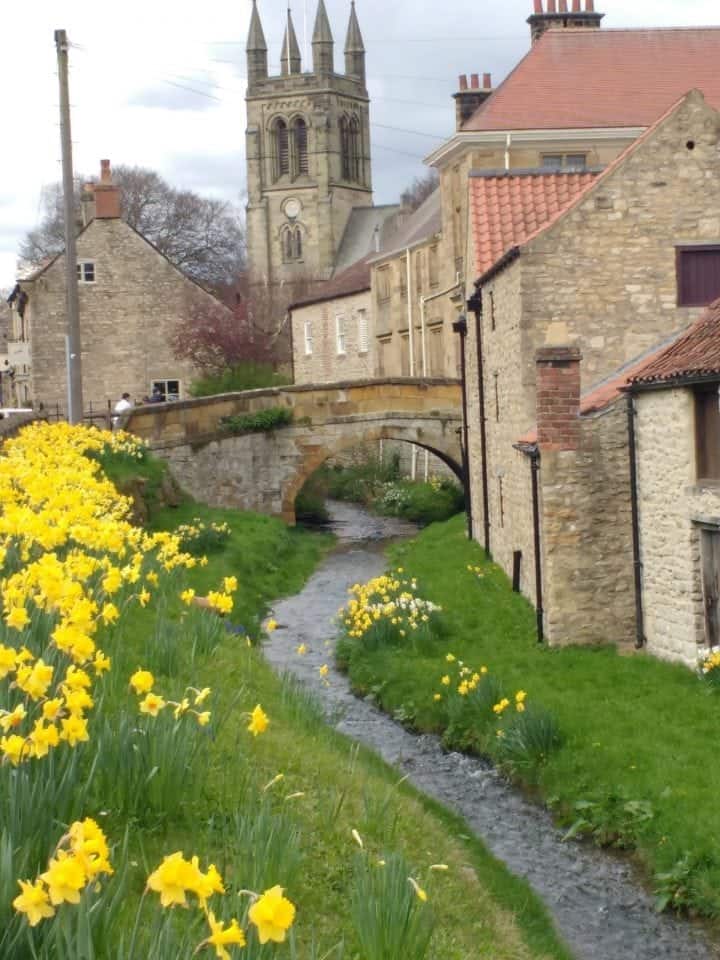
Flamborough
The name Flamborough is believed to come from a word meaning “the place of the flame”. Other sources claim that it derives from “Flaneberg”, possibly from the Saxon “Flaen” meaning a dart, which the shape of the headland resembles.

Flamborough Head
Flamborough Head is a series of chalk cliffs standing over 400 feet high. The cliffs are home to one of the largest sites of nesting sea birds in England, a rare colony of gannets lives and nests here. The clifftop walk is a bird spotter’s paradise, and visitors to the headland include oystercatchers, gulls, eider ducks, and cormorants.
As well as its distinctive white cliffs, there are coves, sea caves and stacks along the coastline.
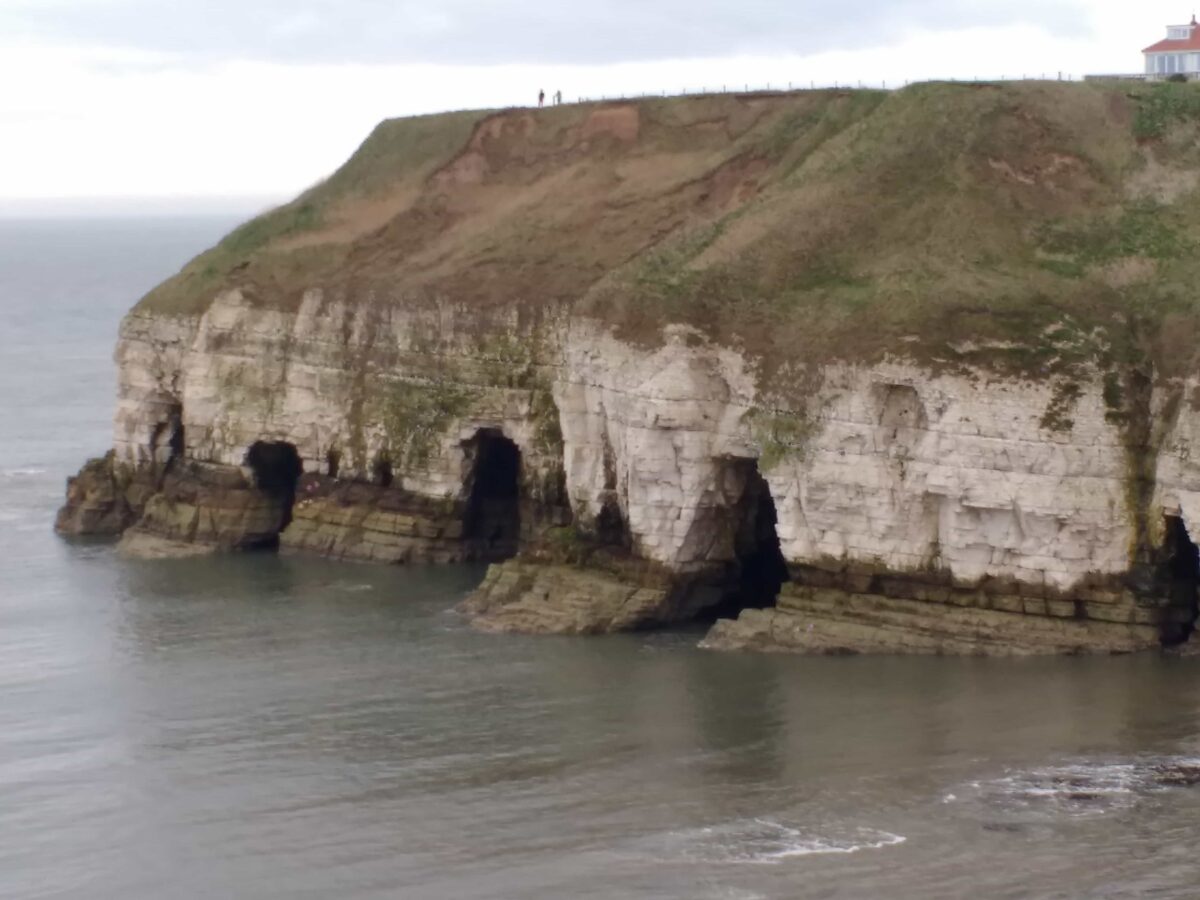
Flamborough Head Lighthouses
There are two lighthouses at Flamborough Head. The old one is set a short distance back from the sea which seems a lot safer to me given the cliff erosion. The new one is built on the edge of the cliff itself.
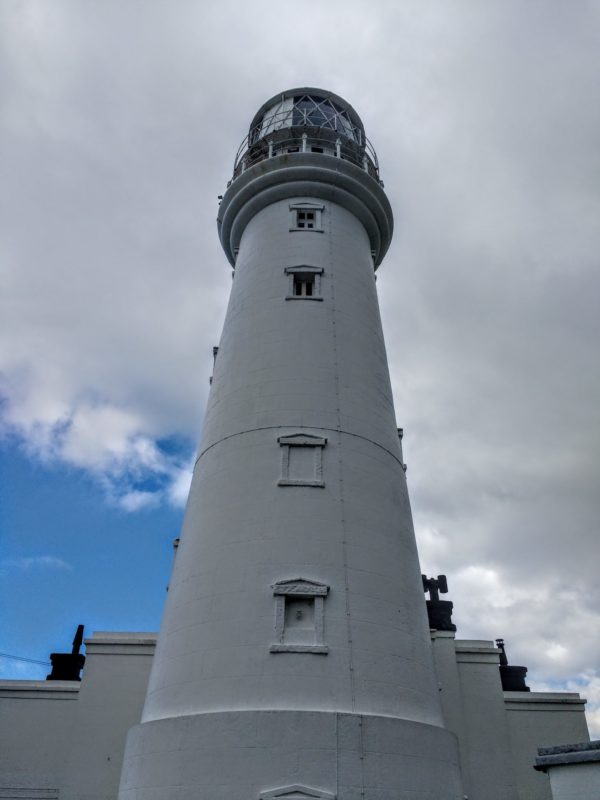
The Chalk Tower
The chalk tower is the only surviving light tower in England. It is believed to date from the 17th century and a brushwood fire would have been burnt on the top to light the way. No one knows however if this lighthouse was ever lit. The structure has several windows and a fireplace so it may have been lived in at some time.
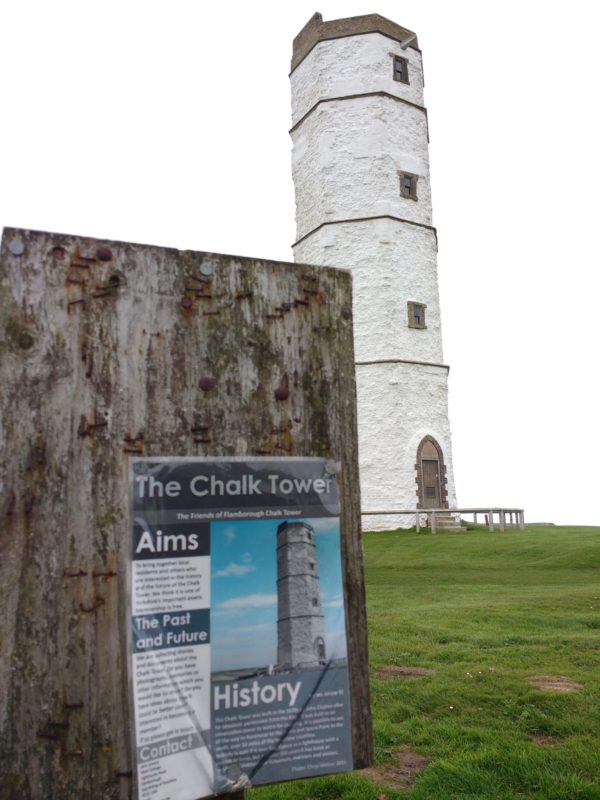
The North Yorkshire Coast is a picturesque destination that boasts some of the most stunning natural landscapes in England. From the rugged cliffs and sandy beaches to the charming seaside towns and historic landmarks, there’s something for everyone to enjoy here. Whether you’re looking for a relaxing getaway or an adventure-filled holiday, this region has it all. So why not plan your next trip to North Yorkshire Coast and discover its many wonders for yourself? With so much to see and do, you’ll be sure to have an unforgettable experience that will leave you wanting more.
You might also like
Visiting Bronte country, home of the Bronte sisters
Waterfalls in the Yorkshire Dales
Kirkham Priory – a hidden gem in Yorkshire
37 Fabulous things to do in York
16 Evocative Ruined Abbeys in Yorkshire
Helmsley Castle an atmospheric ruin in North Yorkshire
Yorkshire Market Towns & Prettiest Yorkshire Villages
